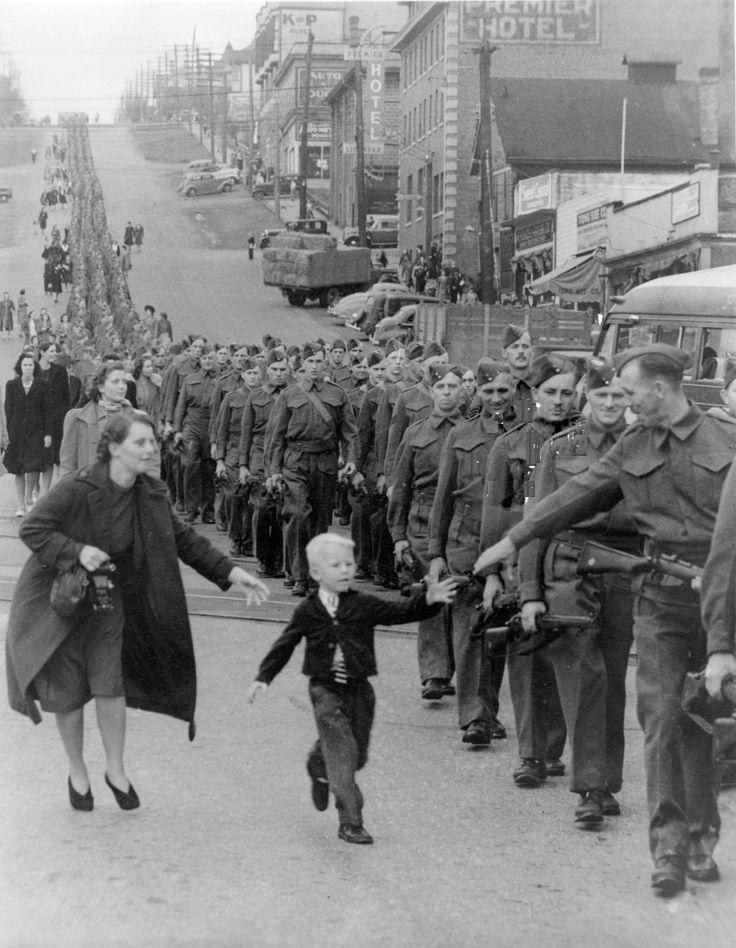
World War II: Canada--Conscription Debate

Figure 1.--Conscription as in World War I was a divisive issue in Canada. Many French Canadians saw the War as an English war and did not want to be drawn into it. There seems to have been little empathy with France, despite the common language. Hitler's massive army was not, however, going to be dfeated by an all volunteer army. There was much more support for the war among English-speaking Canadians, like this regiment in British Cololombia.
|
|
The collapse of France and NAZI victories elsewhere in Europe meant that a huge Allied army would have to be raised. The French army had been the allied bulwark in World War I. Even saving Britain was in question in 1940. If the allies were to reenter the Continent, a massive army would be needed. Even America which was neutral for 2 years initiated a draft in the face of intense opposition from isolationists organized by the American First Committee. This was the first peace-time conscription in American history. The conscription issue had divided Canadians in World war I. The Quebecois resisted conscription. The issue rose again in Canada. It was the most difficult political issue Canada faced during the War, far more serious thgan the decesion to join Britain in the war. And Prime-minister Mackenzie King faced more problems over conscription in his Liberal Party than with the political Opposition. The Quebecois in particular volunteered in much smaller numbers than English speaking Canaians. And many actively resiated the draft. The Quebecois tended to see the war as England's war and were for the most part not moved by France's plight. The conscription issue was temoprarily settled by a general election (March 26, 1940). It was the first election since the onset of the War, but it took place before the fall of France. King achieved a substantial paralimentary majority. The results were interpreted as approving the decesion to go gto war, but also supporting a limited war effort. The Quebecois lack of lack of enthusiasm for the war was evident. As was the strong opposition to conscription. This was a continuation of World War I trends. Voluntary emlistments in Quebec were about 4 percent of the population, compared to about 10 percent in other areas of Canada. (The actual percentage of Quebecois was probably even smaller than this suggests. Many enlistments in Quebec were probably Anglos living there.
CIH -- WW II

Navigate the CIH World war II Section:
[Return to Main World War II: Canadian age and conscription page]
[Return to Maun Canadian World War II page]
[Return to Main World War II age page]
[Return to Main Canadian conscription page]
[About Us]
[Biographies]
[Campaigns]
[Children]
[Countries]
[Deciding factors]
[Diplomacy]
[Geo-political crisis]
[Economics]
[Home front]
[Intelligence]
[POWs]
[Resistance]
[Race]
[Refugees]
[Technology]
[Totalitarian powers]
[Bibliographies]
[Contributions]
[FAQs]
[Images]
[Links]
[Registration]
[Tools]
[Return to Main World War II page]
[Return to Main war essay page]
[Return to CIH Home page]
Created: 9:28 AM 6/12/2015
Last updated: 9:28 AM 6/12/2015



